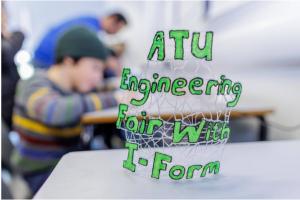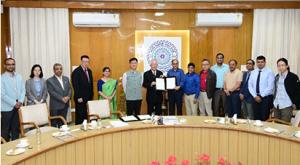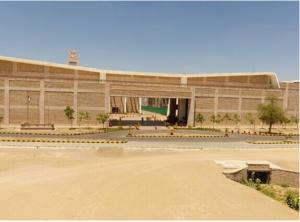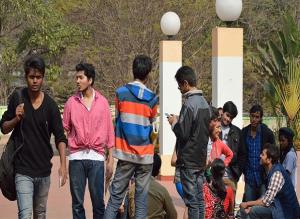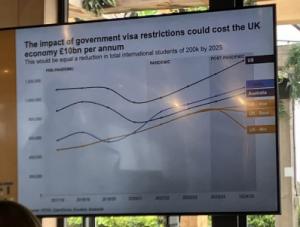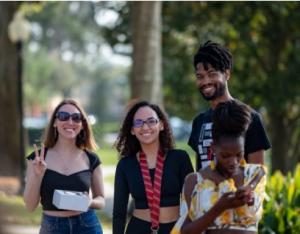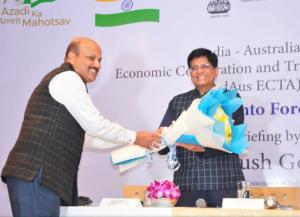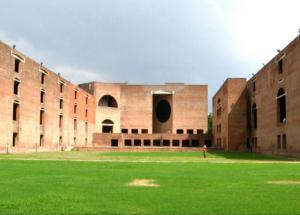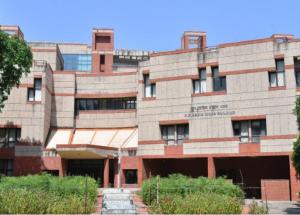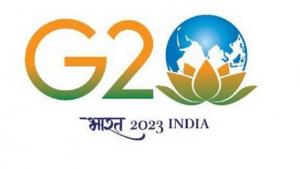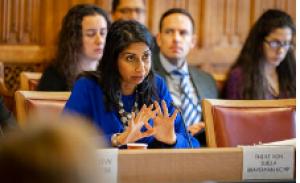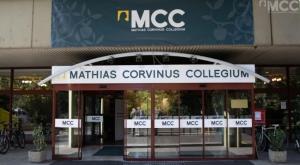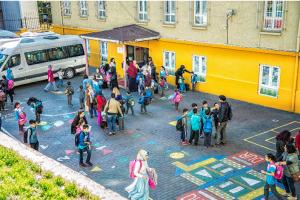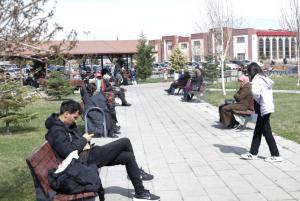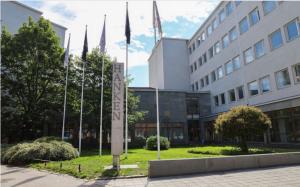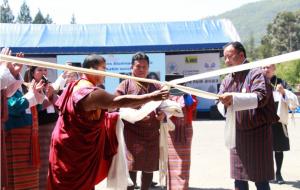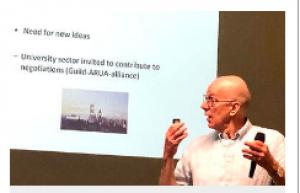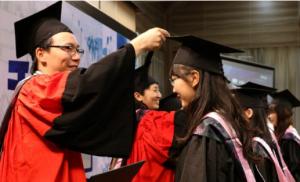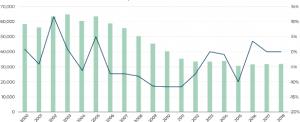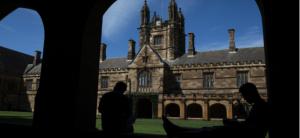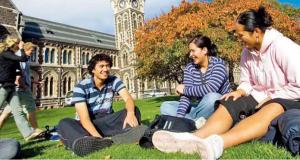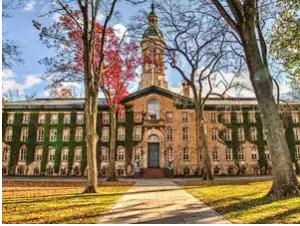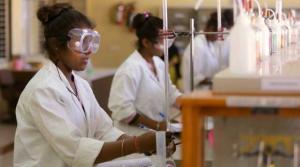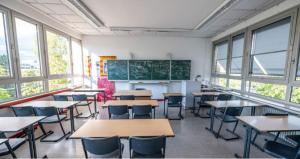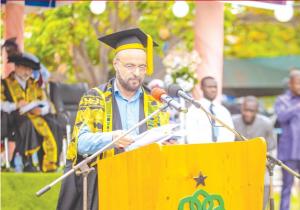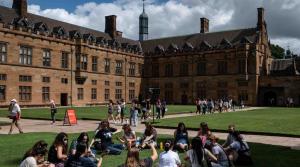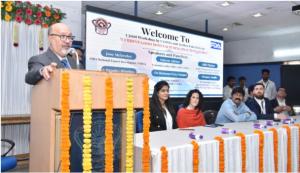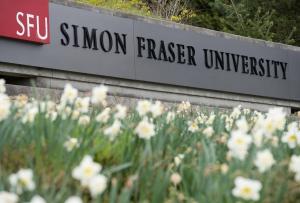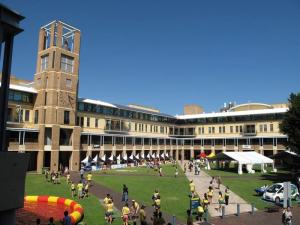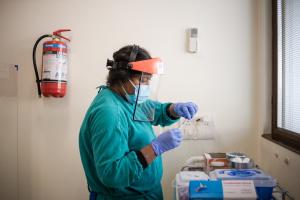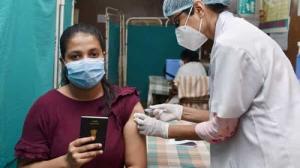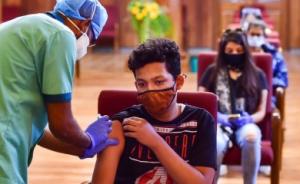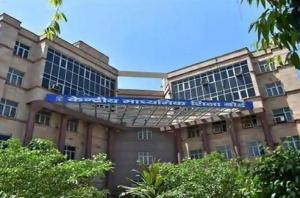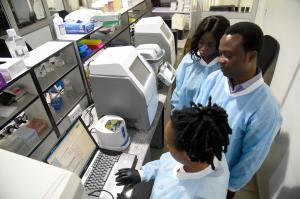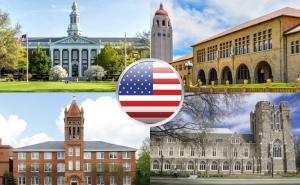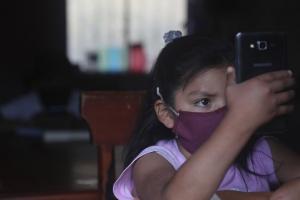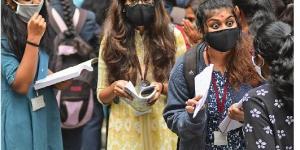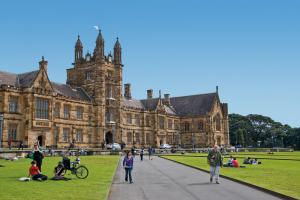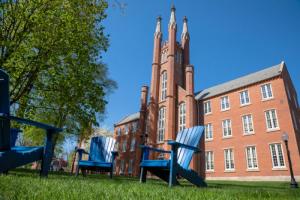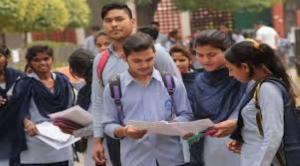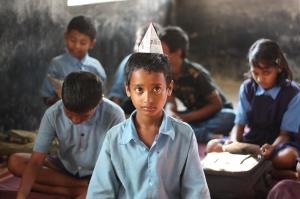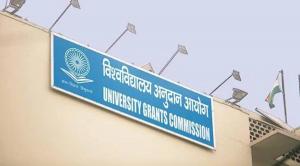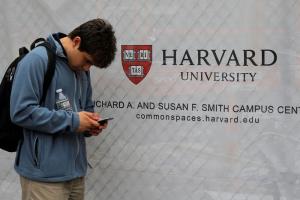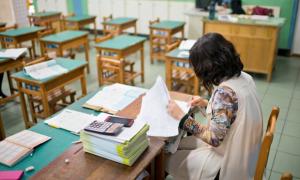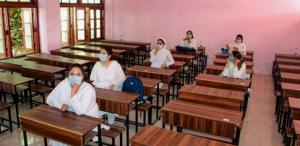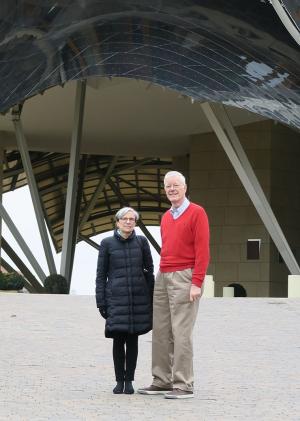The internationalisation and development of higher education in Latin America and the Caribbean have been boosted by the first meeting of UNESCO’s new regional convention on the recognition of studies and degrees, adopted by 23 countries. In terms of student mobility, only 0.8% of students in the region study abroad – against 2.6% globally.
Ratifying countries of the new instrument agreed at the meeting, held on 13-14 April in Uruguay, on a biennial plan and the creation of a regional network of national recognition structures plus an implementation guide to widely promote academic recognition.
The meeting stressed that the convention’s activation will help to guarantee the exercise of the right to higher education, facilitate the sector’s contribution to the United Nations Sustainable Development Goals (SDGs), and improve the futures of young migrants and refugees.
Its potential for positive impact on people’s lives is well illustrated by a decision to “design an online course for the rapid understanding of Venezuelan academic qualifications in view of the massive exodus of its population to neighbouring countries”.
So said Francesc Pedró, director of the UNESCO International Institute for Higher Education in Latin America and the Caribbean (IESALC), which hosts the secretariat of the New Regional Convention for the Recognition of Studies, Diplomas and Degrees in Higher Education in Latin America and the Caribbean (NCRALC).
“The most significant outcome of this first meeting was the adoption of the 2023-24 work plan, which will allow the standards and principles of the new convention to begin to be translated from the normative and axiological level into practice to ensure their effectiveness,” Pedró told University World News.
For instance, there will be a “feasibility study for the implementation of the Diploma Supplement; a guide for the implementation of the convention within the limits established by the national legislation of each of the ratifying states; a study to assess the feasibility of a regional framework for the recognition of micro-credentials”, and the Venezuelan initiative.
Pedró continued: “It was also agreed to create an articulated network of national information centres on academic recognition to support the implementation of the new convention, both in ratifying and signatory countries.”
Powering development
The aim of the new convention – as for those of other world regions including Africa, Asia and Europe – is to facilitate higher education internationalisation and the mobility of students and professionals, and to power higher education and national integration and development.
Pedró told University World News: “UNESCO has been promoting regional conventions for four decades and a global convention on the recognition of studies, degrees and diplomas in higher education more recently, aiming to foster international cooperation in higher education and reduce obstacles to academic mobility.”
The New Regional Convention, dedicated to Latin America and Caribbean, “aims to promote academic mobility and access to education as a human right and a public good that states have an obligation to guarantee, while promoting ethical practices and integrity in recognition of qualifications”.
“To be successful, the new convention requires countries to base their actions on transparency and mutual trust, and to conduct assessment processes in a fair, timely and accountable manner,” he said.
A UNESCO-IESALC report released at the meeting compares seven Latin American and Caribbean countries’ international student mobility and academic recognition systems, among other things.
“There is a large body of literature linking student mobility to improvements in both the quality of higher education and the processes of scientific and technological innovation,” it said.
Also, many studies have highlighted links between human mobility and the progress of countries – especially receiving and high-income countries. “These benefits are related to the role of labour and knowledge exchange in cases of higher productivity and development.”
The report found that around 15% of students in Latin America and the Caribbean who study outside their country of origin are studying within the region. This percentage is 4% in Mexico, 17% in Argentina, 18% in Brazil, 33% in Colombia and 43% in Chile. Improved recognition would enhance regional mobility and integration.
The New Regional Convention
The New Regional Convention, or NCRALC, is the culmination of a long process that started in 2015 with the revision of a 1974 regional recognition convention, and involved many countries and expert meetings.
As with other regions, this ‘first generation’ academic recognition convention was limited in effectiveness, primarily because of a lack of trust among countries in the region, but also because of other factors such as the diversity of legal and recognition systems.
Further, seismic changes in university systems such as massification, internationalisation, growth of the private sector and the emergence of online learning together transformed the context of higher education.
The New Regional Convention was adopted by 23 states in Buenos Aires in Argentina in July 2019 and entered into force on 23 October 2022, said UNESCO.
It has been ratified so far by Cuba, Grenada, Peru, Uruguay and the Holy See, representing the Catholic Church. The first meeting of education ministers of four of the countries, the convention committee and others kickstarted the convention into action.
It is hoped that other signatory states will ratify the instrument and advance complementarity with the Global Convention on the Recognition of Qualifications concerning Higher Education, which entered into force on 5 March 2023.
In a statement on 18 April, UNESCO said meeting participants committed to implementing the convention, to “strengthen the recognition of academic qualifications, academic mobility and inter-university cooperation between countries, with special attention to the convergence of quality assurance mechanisms and harmonisation of academic recognition processes”.
Creating a regional network of national recognition structures would be key to the effective implementation of the new convention, to promote exchange of information on recognition and mobility, mutual understanding and transparency among higher education systems.
The statement continued: “The harmonisation of the recognition of academic qualifications will undoubtedly increase academic mobility and internationalisation and with it the integration and development of the region.”
Further, UNESCO said, the convention’s implementation “contributes to guaranteeing the exercise of the right to higher education, ensuring at the normative level the achievement of [SDG] target 4.3, which calls for removing ‘barriers’ to access to skills development and higher education, enabling lifelong learning opportunities for all people”. It will also enable other contributions, given the cross-cutting nature of higher education across the 17 SDGs.
The meeting declaration also stressed the need to strengthen cooperation to ensure inclusive and quality higher education, and expressed concern for young people, who are most affected by armed conflict, as migrants and refugees.
It said: “The interruption of youth access to higher education and economic opportunities has a dramatic impact on lasting peace and reconciliation among peoples.”
Comparing countries
The UNESCO report, titled The New Regional Convention for the Recognition of Studies, Degrees and Diplomas in Latin America and the Caribbean (2019): A comparative approach to recognition processes in the region, was produced by IESALC as a working paper.
It said higher education had expanded rapidly and diversified across the region. “A multitude of new higher education providers have emerged, and both these and more traditional ones are exploring how information technologies can be used to reach a larger number of students.”
For instance, in Ibero-America, comprising some 20 Spanish- and Portuguese-speaking countries, contact higher education grew by 27% between 2010 and 2020, while distance education increased by 86%. With the spectacular growth of private higher education, it now comprises nearly 55% of higher education enrolment.
“Labour migration and the presence of migrant workers in Latin America and the Caribbean have increased in recent decades because of armed conflicts, economic and climate crises, and inequalities in the region,” said the report.
As a result, 80% of migrants currently come from other countries in the region, in most cases from neighbouring countries. According to International Labour Organization (ILO) figures, around 14.8 million people in the region live in a country in which they were not born.
According to a 2019 ILO study on labour migration, 30% of migrant employment in Chile, Colombia and the Dominican Republic was of people with higher education studies.
Mobility in seven countries analysed
The report also charts, among other things, student mobility and the recognition systems of seven countries: Argentina, Colombia, Cuba, Grenada, Peru, Uruguay and Venezuela. The data on student mobility are mostly from the UNESCO Institute for Statistics. For each country, the top five source and destination countries for mobile students are listed.
Generally, the competent recognition authorities include the ministry of education and one or two statutory higher education bodies. Recognition procedures fall under national higher education laws, resolutions and-or guidelines.
Argentina: Argentina has a high number of international students, and “attracts as many students as the rest of Latin America and the Caribbean”, said the report. “The vast majority come from the region itself.” In 2020, Argentina attracted 121,577 students, mainly from Brazil, Peru, Bolivia, Colombia and Paraguay. Only 9,990 Argentinians studied elsewhere, mainly in the United States, Spain, Brazil, Germany and France.
Colombia: Colombia has one of the largest contingents of outbound students in Latin America. “Around 33% go to other countries in the same region. Most incoming students are from neighbouring countries. In 2020 there were 5,058 foreign students in Colombia, mostly from Venezuela, Ecuador, Mexico, Peru and France. A high number (56,910) of Colombian students left the country to study in mainly Argentina, Spain, the US, Australia and Germany.
Cuba: In Cuba, incoming foreign students outnumber outgoing students. “Those from African nations lead in incoming mobility.” In 2021, there were 7,806 inbound students in Cuba, mostly from South Africa, Congo, Angola, Colombia and Namibia. Only 3,249 Cubans studied abroad, mainly in Spain, Ecuador, Brazil, Argentina and Chile
Grenada: Like other Caribbean island states, Grenada has dynamics that differ from continental countries. This is largely because of predominant English use, and the small population. In 2022, there were 5,382 international students in Grenada, mostly from the US, Canada, Trinidad and Tobago, India and Nigeria. Only 166 students left to study abroad, mainly going to the US, Trinidad and Tobago, Cuba, Canada and Britain.
Peru: Peru has a high number of outgoing students. In 2022 there were 10,280 international students, mostly from Argentina, Venezuela, Chile, Japan and Colombia, while in the same year 35,379 Peruvians studied abroad in mainly Argentina, the US, Spain, Chile and Brazil.
Uruguay: Uruguay does not have high numbers of international students, and around double the number of its students study abroad – around 2% of all students enrolled. In 2020, the country had 3,654 international students, mostly from Spain, France, Germany, Brazil, the US and Argentina, while 6,183 Uruguayans travelled to study in mainly Argentina, Brazil, Spain, the US and Germany.
Venezuela: In Venezuela, there are small numbers of international students – only 379 in 2020, mostly from Haiti, Brazil, Mali, Nigeria and Chad, said the report. In contrast, a high 31,707 Venezuelans studied abroad, mainly in Argentina, the US, Spain, Chile and Colombia.
Overcoming obstacles to recognition
The report outlined many factors that have hindered the recognition of qualifications obtained overseas, such as massification, institutional and legislative diversity, the intensity of academic and labour mobility, and lack of trust of other university systems.
There is a lack of common criteria for engaging in the recognition procedure, and of updated, reliable and comparable information on systems, and difficulties in defining common recognition procedures and mechanisms. Also, most recognition mechanisms are based on bilateral, intergovernmental or inter-university agreements. These enable recognition between countries but present enormous obstacles for regional recognition.
Such factors, the report said, disrupted the ‘first generation’ conventions the world over.
“It took contextual transformations and a substantially modified ideological conviction, by no means a minor effort, to dissipate the scepticisms of the time, up until the advent of a more favourable political and economic context for reform,” giving rise to the ‘second generation agreements’ of today.
With its ratification, NRCLAC “represents an extraordinary opportunity to open a new avenue of work that will allow for the harmonisation of higher education degree recognition procedures among the state parties”, the report said.
“The untapped potential of this recognition for students and professionals – a more timely, fairer and expanded recognition – is undoubtedly an opportunity to catalyse the potential of the internationalisation of regional higher education, to take advantage of human talent in its continuous displacement, whether forced or voluntary, and to cushion the consequences that cultural inequalities sometimes imply for the labour insertion of foreign citizens in host countries.”

Source link: https://www.universityworldnews.com/post.php?story=2023042113191746













